Stroke
Home / Stroke
Understanding Stroke
What is a stroke?
A stroke is a medical emergency and a life-threatening condition that occurs when blood flow to a part of the brain is interrupted or reduced, preventing brain tissue from getting the oxygen and nutrients it needs. A stroke can cause permanent brain damage within minutes or hours. Without blood, brain cells start to die, which can affect how we move, talk, think, or feel. But early treatment can reduce disability and save lives.
A stroke is a serious medical emergency that requires immediate medical attention, just like a heart attack. If you suspect that you or someone else is having a stroke, phone 112 and ask for an ambulance.
Strokes can be both prevented and treated. Making lifestyle changes and managing risk factors, such as regularly monitoring and controlling your blood pressure and cholesterol, can help lower your risk of stroke and significantly reduce the risk for other conditions, including heart attacks or dementia.
In recent years, we have seen an increase in stroke in adults under the age of 49. While nearly three-quarters of strokes occur in people over 65, the risk almost doubles each decade after age 55.
In Ireland, approximately 7,500 people have a stroke each year, which puts stroke as the leading cause of acquired neurological disability in adults (Irish National Audit of Stroke, 2019).
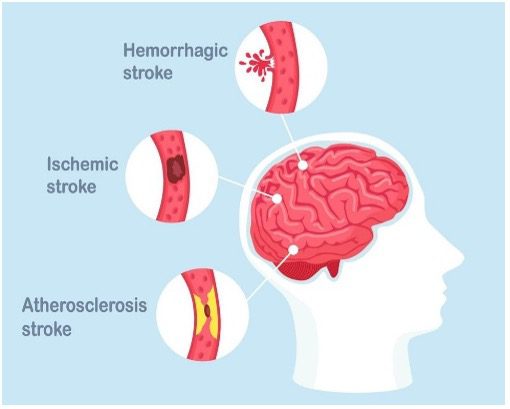
Stroke Facts
Stroke is the second leading cause of disability in the world, after dementia. Every year, 15 million people worldwide suffer a stroke (Rexrode, K. M. et al., 2022).
In Ireland alone, approximately 7,500 people have a stroke each year, making it the leading cause of acquired neurological disability in adults (Irish National Audit of Stroke, 2019).
Stroke also has a high prevalence of comorbidities:
- 75% of stroke survivors also have other cardiovascular diseases (CVD)
- 84% have high blood pressure or hypertension
- 80% present glucose intolerance and/or diabetes type II (Moncion, K., et al., 2020)
Types of Stroke:
Largely, there are two main types of strokes, Ischemic and Haemorrhagic.
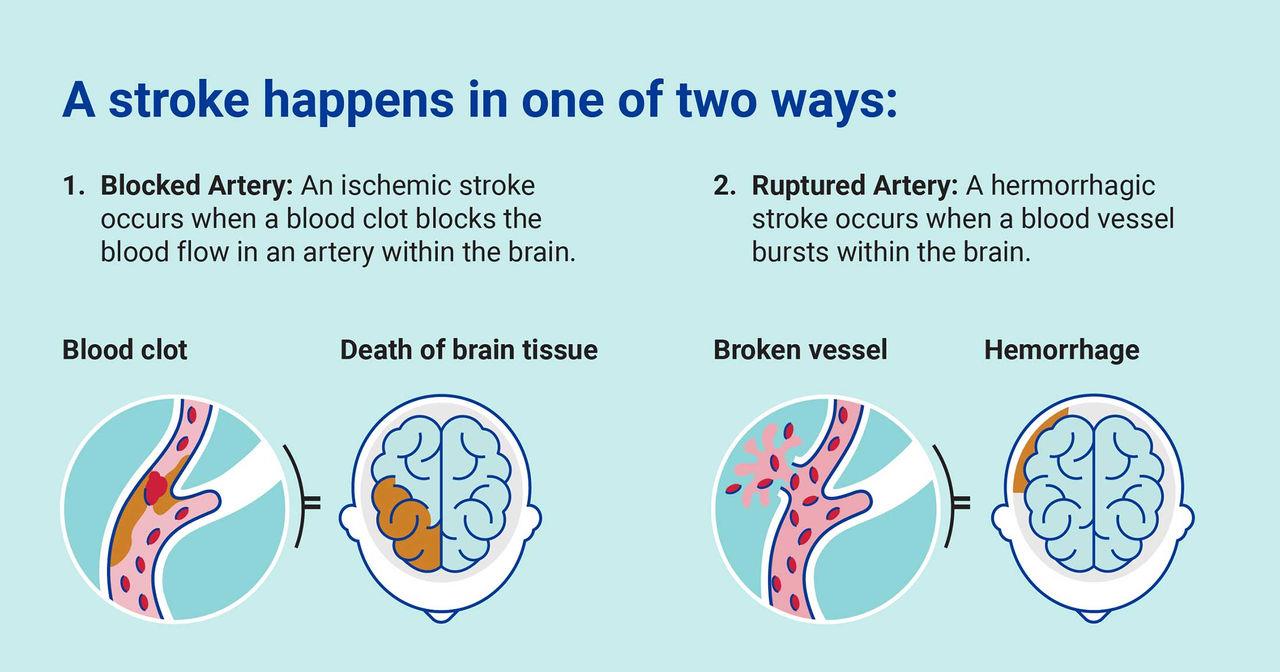
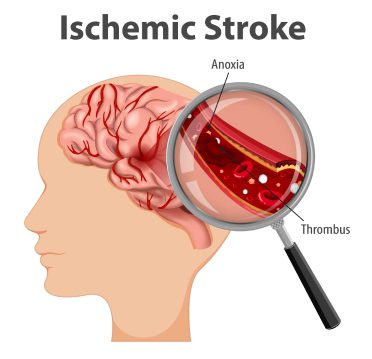
Ischemic Stroke
Ischemic Stroke accounts for more than 80% of cases. Occurs when the blood flow to the brain is interrupted or blocked by a blood clot or plaque (formed by a build-up of fatty substances like cholesterol) in one or more of the arteries that supply blood to the different areas of the brain. An ischemic stroke can be caused by:
- Thrombosis: A clot is formed in one of the arteries in the brain.
- Embolism: A clot is formed elsewhere in the body (e.g., the heart) and travels to the brain, getting trapped in an already narrowed artery in the brain or neck.
- Stenosis: One of the arteries in the brain or neck narrows. Usually caused by a condition called atherosclerosis, which also causes thickening and loss of elasticity in the walls of the brain. Closely related to heart attacks.
Haemorrhagic Stroke
Haemorrhagic Stroke accounts for approximately 20% of the cases. Occurs when an already weakened blood vessel bursts, causing bleeding in the brain. When a blood vessel in the brain bursts, blood leaks, causing pressure on the brain and damaging the brain cells, called neurons.
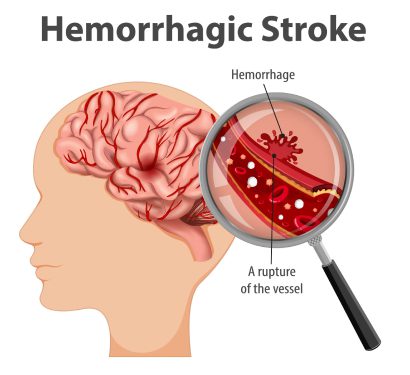
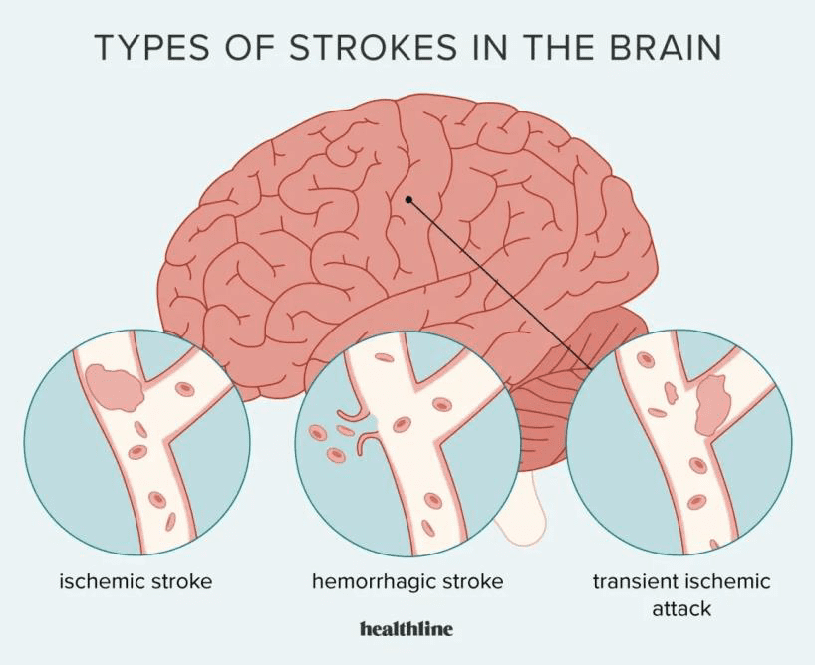
Transient Ischaemic Attack (TIA)
If the blood flow disruption in the brain is only temporary, the event is known as a Transient Ischaemic Attack (TIA) or “Mini Stroke”. When a TIA or Mini Stroke happens, the brain is blocked temporarily, often for a few minutes. This is why the signs only last for a short period of time. TIA is a warning sign that a major stroke may occur in the future
Signs of a Stroke:
Strokes are a medical emergency that requires immediate attention. Don’t wait, time is crucial. If you suspect that you or someone else might be having a stroke, call 112 and ask for an ambulance.
Act FAST:
F-Face: Can the person smile? Has their eye or mouth drooped?
A-Arm Weakness: Ask the person to raise both arms. Can they lift both arms? Is one arm weak, drooping, or numb?
S-Speech: Ask the person to answer a simple question, like where they are right now. Is speech slurred or jumbled up? Do they understand you?
T-Time: It is time to call 112 or 999 if you see any of these signs. Time is critical.
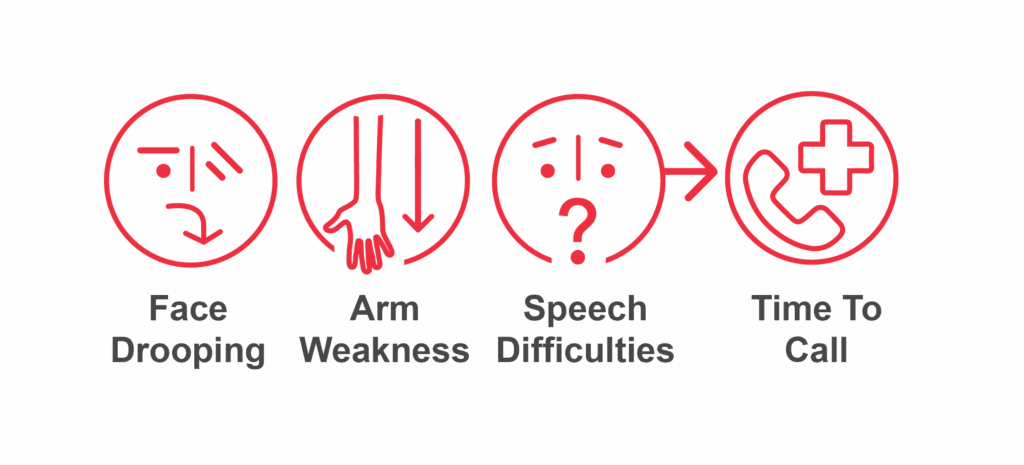
Other Signs & Symptoms:
Some people who are having a stroke also experience trouble with:
Balance and Coordination: Is there a lack of coordination on one side or any staggering when walking?
Eyes: Any sudden blurred vision, double vision or loss of vision? Loss of vision can be in one eye or both eyes, on the left or right side.
Other symptoms may include severe headache, dizziness, drowsiness, nausea and vomiting.
A person having a stroke may not realise what is happening, or the effects of the stroke may stop them from recognising the problem. That’s why others need to be able to spot the signs of stroke (what the observer can see), as the symptoms (what the person experiencing the stroke feels) usually appear suddenly and without warning. These signs are the body’s way of signalling that the person’s brain is not getting the oxygen and nutrients it needs to work properly.
Anyone suspecting they are having a stroke should not drive to the hospital themselves or have someone else drive them. The window of opportunity to facilitate the best stroke treatments is limited. Calling an ambulance is essential, as medical personnel can begin life-saving care en route to the hospital.
Strokes are a medical emergency that require immediate attention. Don’t wait, time is crucial. Be ready:
- Make the call. If you suspect that someone is having a stroke, phone 112 and ask for an ambulance
Inform about the emergency. Tell the person on the emergency line that you suspect that you or someone else is having a stroke
Tell them your current location. Tell the person on the emergency line your address or Eircode if you know it
Wait for the ambulance to arrive, keep your phone close to you and follow any indication given by the emergency department line
Note the time when your signs started. This might help doctors to determine the most appropriate treatment option.
Not all strokes are the same and no two people are affected by stroke in the same way. The effects of a stroke depend on the area of the brain affected and the extent of the damage to your brain. Recovery is different for each person too. Some people may recover completely whereas others may be left with more serious disabilities or even die. Recovery is usually a gradual process and can take months as the brain heals.
The brain has two sides, left and right. Signals from the left brain control the right body and vice versa. This is why a stroke on the left side of the brain will affect the right side of the body.
- Left Brain Stroke: Right-side weakness, trouble speaking, slow/cautious behaviour, difficulty with speech and language or understanding what you hear and read.
- Right Brain Stroke: Left-side weakness, trouble with perception, impulsive behaviour. Doing creative things like painting, playing music and making sense of what you see, hear and touch may be more challenging too. In addition, as your perception capacity might be affected, you may also find it difficult to recognise emotions in others and understanding your own.
- Brain Stem: It can affect both sides of the body due to the way nerve pathways cross in the brain stem and can have severe consequences as this area of the brain controls critical functions such as breathing, swallowing, heartbeat, body temperature, digestion, blood pressure, sleep regulation, level of consciousness, etc. It can also lead into what is called Locked-In Syndrome – a rare but severe condition where the individual is conscious but unable to move or communicate except through eye movements.
Some symptoms may improve in time and many people can make a good recovery following a stroke. Early treatment, appropriate medication and rehabilitation all have an impact on the final outcome.
A risk factor is anything that increases the likelihood of developing a disease or condition, such as a stroke. There are two types of risk factors – modifiable and non-modifiable. Understanding these can help you make informed choices to lower your stroke risk.
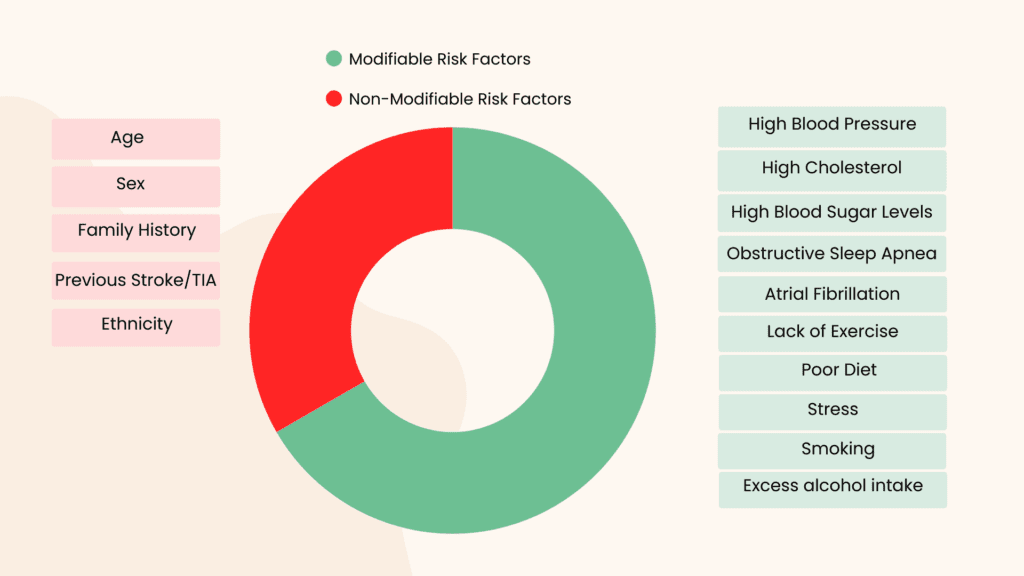
Non-Modifiable Risk Factors are those that can’t be changed, they’re part of who you are. While you can’t control them, knowing about them helps you make better lifestyle choices to manage your overall health and lower your risk.
The key non-modifiable risk factors for stroke are:
- Age: The risk of stroke increases with age, doubling every decade after 55
- Sex: Younger women may have a higher risk of stroke due to pregnancy-related factors and hormonal contraceptives, but older men tend to have a slightly higher risk
- Ethnicity: People of African descent may be at a higher risk, especially for hemorrhagic strokes, due to higher rates of hypertension in this demographic
- Family History/Genetics: If stroke, heart disease, or diabetes runs in your family, you might have a higher chance of developing these conditions yourself
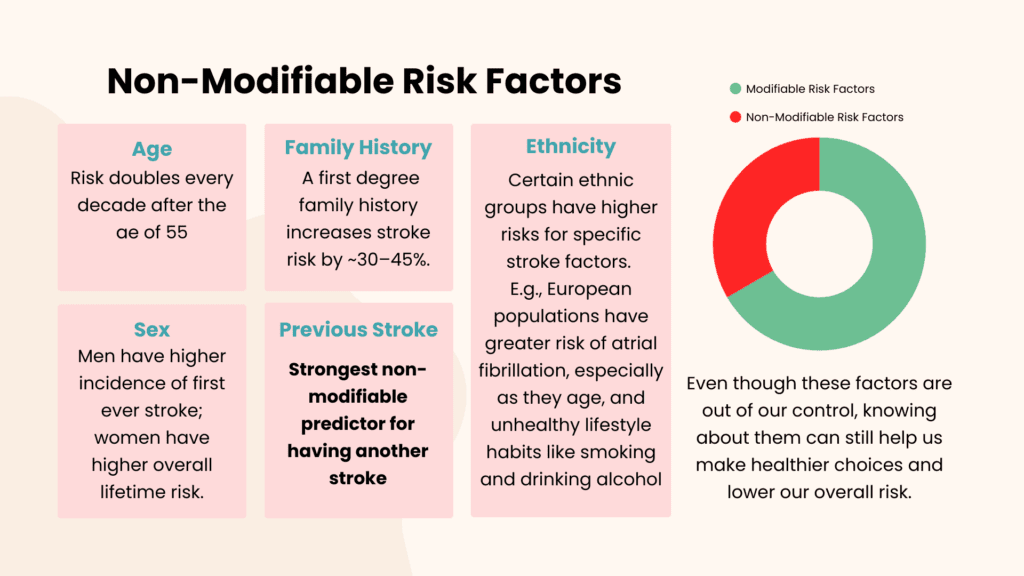
Modifiable Risk Factors can negatively affect your health but can be changed or controlled by making different choices in your daily life. By making healthier lifestyle choices, you can reduce your risk of stroke and improve your overall health. The key modifiable risk factors for stroke are:
- Hypertension (High Blood Pressure): It is also called the silent killer. This is the most important modifiable risk factor for stroke as it causes about 50% of ischemic strokes and is the principal risk factor for hemorrhagic stroke
- Diabetes: People with diabetes has a 2-fold increased risk of stroke and it can even be higher in women. Pre-diabetics are also at increased risk of stroke
- Dyslipidemia (High Cholesterol): High cholesterol levels can cause arteries to clog, leading to ischemic stroke. Did you know that just by lowering the bad cholesterol levels by 1.0 mmol/L we can reduce up to 15% of the risk of any type of stroke and by 9% the risk in total mortality
- Atrial Fibrillation (AF): This irregular heartbeat can cause blood to pool and form clots, which can lead to stroke
- Sedentary Behaviour: A lack of physical activity contributes to many health issues, including an increased risk of stroke. People who are physically active have a lower risk of stroke and stroke mortality than those who are inactive
- Obesity and Body Weight: Carrying extra weight can strain your body, increasing the risk of stroke. A good health indicator for body weight is waist-to-hip ratio, more than body mass index, as there are many factors that influence our body, such as bone density or muscle mass
- Metabolic Syndrome: Metabolic syndrome is a cluster of risk factors that, when they occur together, increase your risk of stroke, heart disease, and diabetes. These risk factors include high blood pressure, high blood sugar, and excess belly fat. If you have multiple of these conditions your overall health is at greater risk, making it crucial to manage them effectively through lifestyle changes such as improving your diet, increasing physical activity and managing stress
- Alcohol Consumption: Alcohol has the capacity to impact blood pressure levels and vascular tissue, therefore, alcohol consumption can increase the risk of strokes, and especially hemorrhagic strokes. There is no such thing as an ideal alcohol consumption level. Zero alcohol intake, specifically after stroke, is the golden target
- Smoking: It is estimated that smoking contributes to ≈15% of all stroke deaths per year. Smoking cessation rapidly reduces the risk of stroke, with excess risk nearly disappearing 2 to 4 years after smoking cessation. Second-hand smokers also have a 30% increased risk of having a stroke
- Obstructive Sleep Apnea: Present in between 30-70% of stroke survivors, this condition causes pauses in breathing during sleep, disrupting rest and increasing the risk of stroke
- Oral Contraception: Hormonal contraception can increase to double the relative risk of ischemic stroke, particularly for women who smoke or have high blood pressure levels. Mainly associated with the use of combined estrogen oral contraception
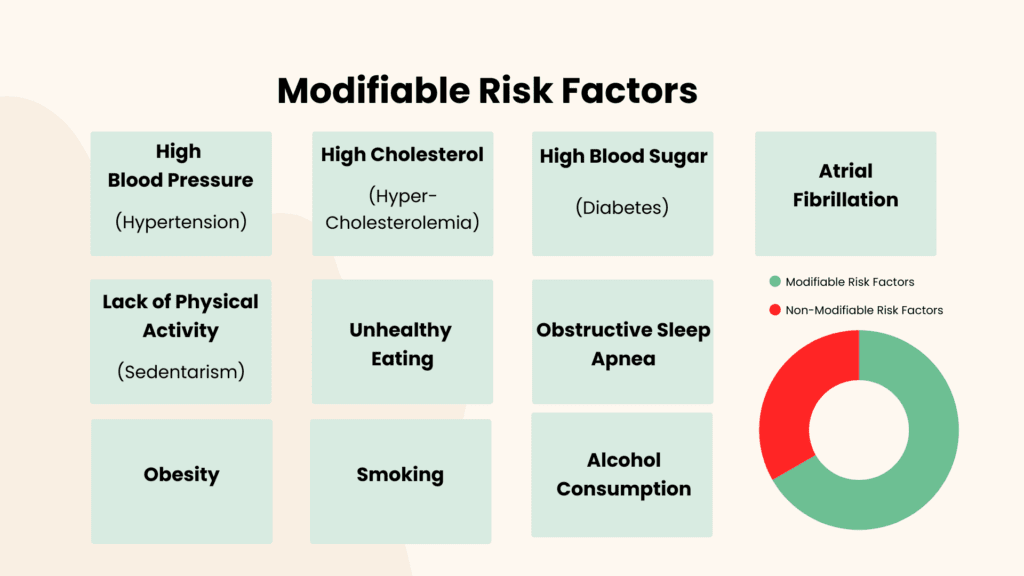
While some risk factors are beyond your control, many others are modifiable. Making positive changes to your lifestyle, such as controlling blood pressure, eating a balanced diet, staying active and quitting smoking, can significantly lower your stroke risk. It’s never too late to start making healthier choices!
If you have any questions or concerns, please contact the Croí Health Team by calling 091-544310 or emailing healthteam@croi.ie.